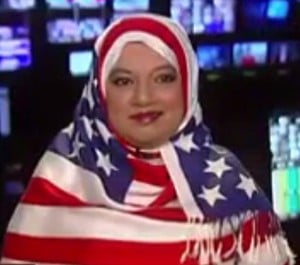The concept of wearing hijab tends to stir controversy around the world, especially in the media. For some, hijab may be a piece of cloth that women wear as part of social traditions; for some others, it is a form of religious devoutness; yet, for others, it is a symbol of oppression and injustice towards Muslim women.
While some women are forced to wear hijab by their husbands, brothers, or fathers, others do it voluntarily. This is the central theme of the documentary I Wasn’t Always Dressed Like This. Aiming to convey this notion of free choice, the documentary explores the experiences of three UK Muslim women who have chosen to put on hijab.
Director Betty Martins interviews three women in the 33-minute documentary, addressing mainly three themes: first, the journey that these three women have had to go through to make decisions on hijab; second, what hijab means personally for each one of them; and finally, how the surrounding community views those women as they opt to cover their hair, and in one case, her face.
The first lady is a French convert, who was raised accepting the mainstream French discourse about the hijab. She visited Palestine, and felt a need to answer the call to prayer in Jerusalem. That was when she decided to convert, and the idea of hijab became more appealing.
The second lady is a Syrian, who comes from an artistic family. Her father was not keen on his daughter wearing the headscarf, because “it will limit her choices,” especially that she was attending a music school.
The third is a British woman who was born Muslim, but knew nothing about Islam. Her interactions with people surrounding her, including an incident at school when she was 13, led her to ask questions about Islam and hijab in particular. Studying feminism led her to believe in the need to wear niqab as a way of hiding her face and body from the “unnecessary” glances of men around her.
The film takes an interesting approach, presenting stories of Muslim women who were free to make the choice to cover their heads. Putting on a headscarf was a way for these women to define their appearance in public, and try to change other people’s perspectives on hijab.

The three women concur that people should not be judging them on their looks; instead, people should get to know them better, because hijab is part of the identity they hold, and part of the choice they made. In an interview she gave to the University of East Angalia, Norwich, UK, Betty Martins said:
“In this film, we hear first-hand about their experiences as women, discover what freedom is to them and what beauty is for them. I want people to see these women as they want to be seen, not as people would like to see them.”
I was deeply touched by the three stories. The strength and resilience demonstrated by each one of these women as they face a community with little knowledge about or appreciation for hijab is quite inspiring. In some way, however, I found that the first two stories did not present a compelling turning point, as I had expected, to explain what drove the two women to embark on the hijab-wearing journey. For both women, it was more about “answering a spiritual call” than reacting to an incident or a series of incidents that brought forth curiosity about Islam and hijab. I had always thought that a woman who decides to cover her hair must have gone through an incident that is a life changer. I have seen many women in my life whose loved ones passed away, for example, and as a result of such incidents, they would put on hijab. But listening to those stories in the film, I was surprised to see women who could just put on hijab because of an inner call, or a different feeling they had.
The documentary has attracted much attention in the locations in which it was screened. In an interview she gave to the Emirati newspaper The National, Martins recalls someone making a comment about the film. She notes that “someone who saw (the documentary) told me that before she never agreed with the hijab. Now, after hearing the narratives in the film, she at least respected their choices as women.”
I believe the film’s message is incredibly powerful in these critical times where hijab has been at the center of clash of civilization debates around the world. If some women make the choice not to cover their hair, that free choice principle should equally apply to those who are willing to do it. That was what the three women in the film did, and they could still go on with their lives normally like any other person. At the end of the day, a woman wearing hijab should not be labelled in any ways; she is just a person who made a choice like any other choice in our lives.











